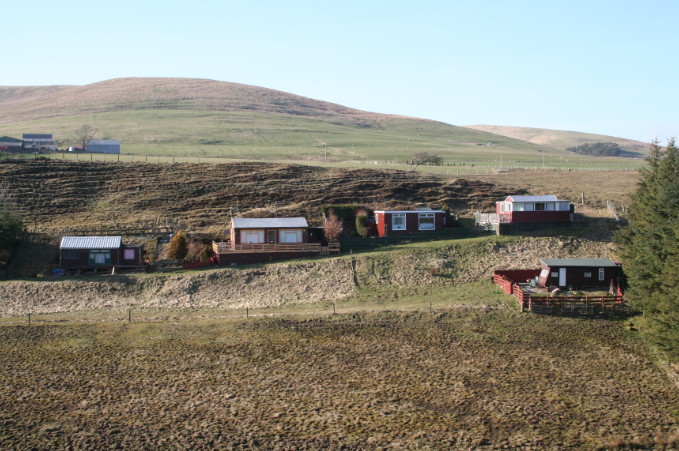In the early 1920s a very small group of people from Glasgow's Clydeside built a few small timber huts in wooded countryside some 10 miles to the north. The aim was to use them at weekends and as holiday retreats, to get away from the drudgery of urban life. They started a tradition that grew and continues today. Summer huts have no mains water or electricity, and they are usually sited on land that is not owned by the hutters, but they represent what many regard as a low-impact, ecological way of life.
Summer huts occur in small groups on current OS maps and recent aerial photographs. They are shown as a scatter of small buildings, yards and rough access tracks or paths in rural areas, and are often located in woodland rather than in open fields or by the sea, where caravan and chalet parks are more common.

This small group of summer huts on the eastern slopes of the Pentland Hills south of Edinburgh is typical of this land use type, with no infrastructure associated with such sites. Current OS maps and recent aerial photos provide an indication of their informal character.
HES DP151435